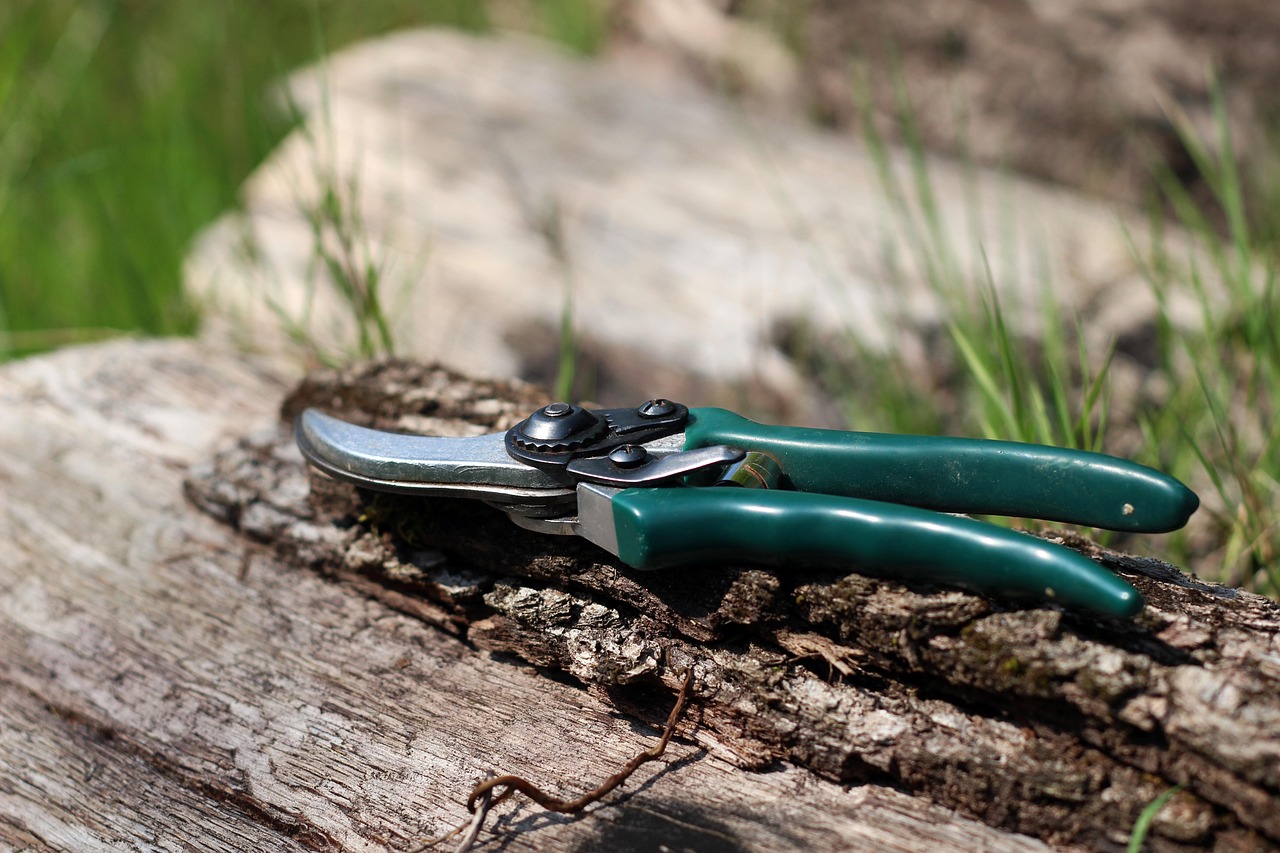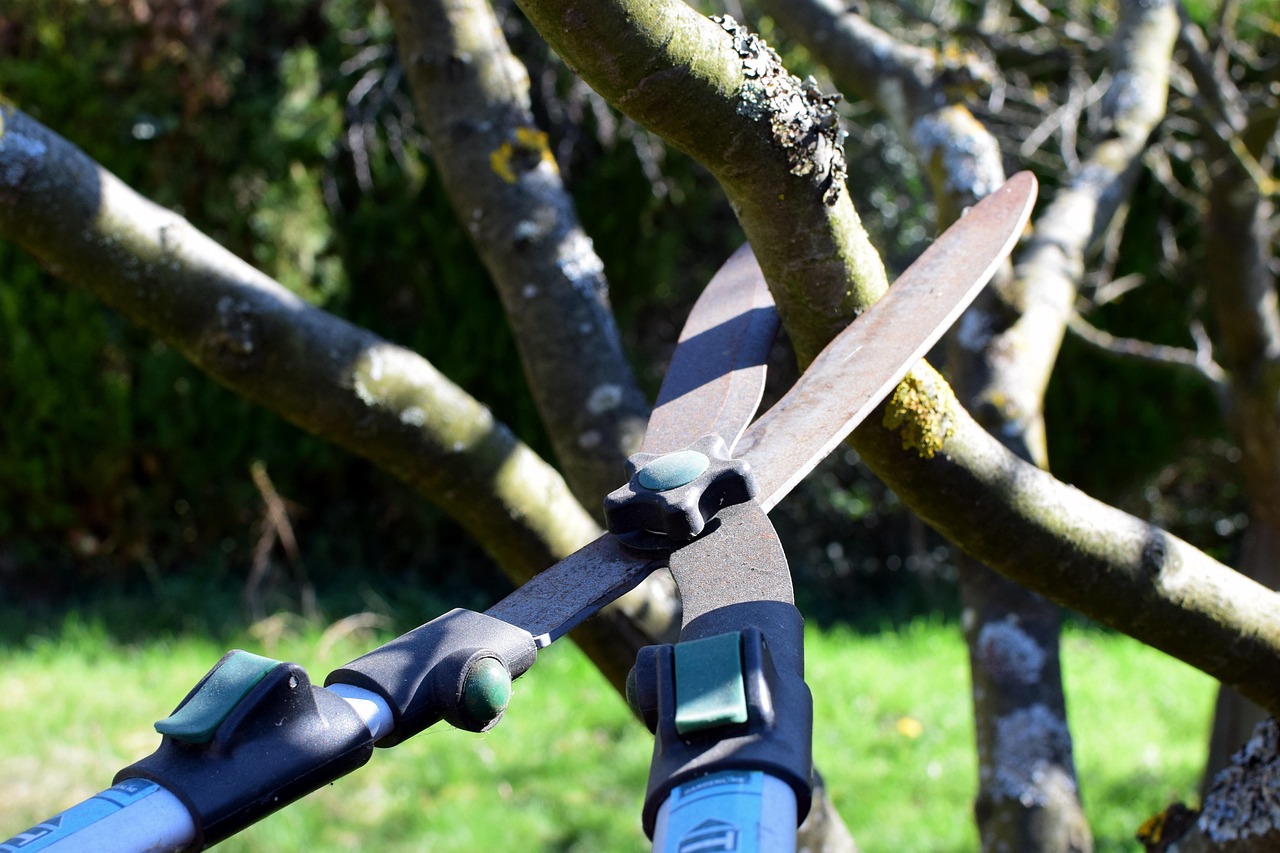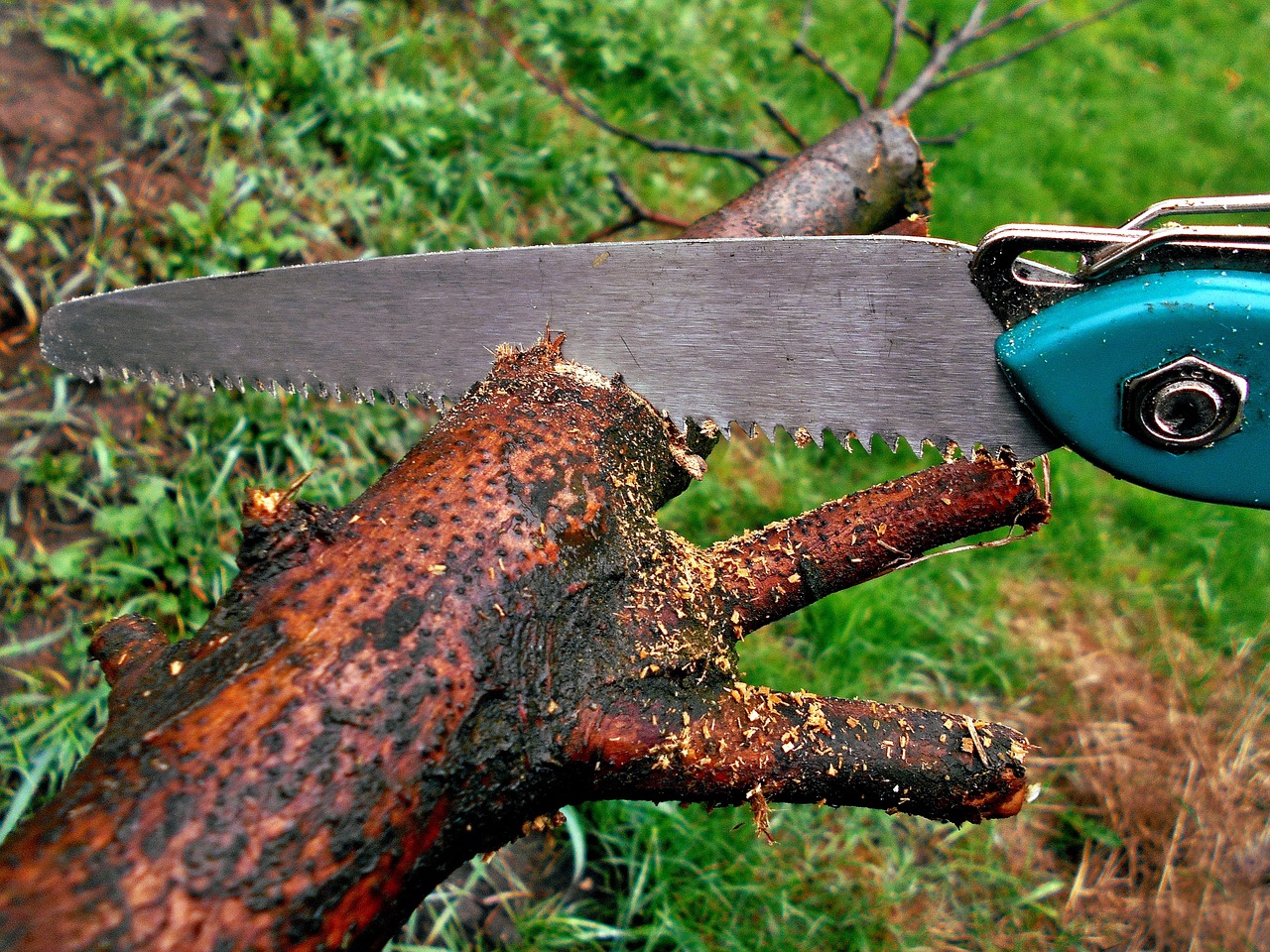Pruning is a crucial practice for microfarms, enhancing plant health, yield, and overall productivity. It involves removing specific parts of plants to promote growth, improve air circulation, and increase sunlight exposure. Proper techniques can lead to healthier crops and a more fruitful harvest.
Understanding Pruning in Microfarming
Microfarming refers to small-scale farming operations that focus on growing food in limited spaces. These farms often utilize innovative methods to maximize yield and sustainability. Pruning is an essential aspect of microfarming that helps maintain plant health and enhance productivity. By understanding the principles of pruning, microfarmers can cultivate healthier plants and achieve better results.

Pruning can significantly impact various plant types, including vegetables, fruits, and herbs. Each plant species may require different pruning techniques and timing. Therefore, it is essential to understand the specific needs of each type of plant grown in a microfarm.
Benefits of Pruning
Pruning offers multiple benefits for microfarmers. Some of the primary advantages include:
- Enhanced Growth: Removing dead or overgrown branches allows plants to focus their energy on new growth.
- Improved Air Circulation: Proper pruning increases airflow around plants, reducing the risk of diseases.
- Better Sunlight Exposure: Pruning ensures that all parts of the plant receive sufficient sunlight, promoting photosynthesis.
- Increased Yield: Healthier plants often result in higher yields, as they can produce more fruit or vegetables.
- Shape and Size Control: Pruning helps manage the size and shape of plants, making them easier to harvest and care for.
Common Pruning Techniques
There are several pruning techniques that microfarmers should be familiar with. Each method serves a specific purpose and is suited for different plant types:

- Thinning: This technique involves removing entire branches or stems to allow better light penetration and air circulation.
- Heading: Cutting back the tips of branches encourages bushier growth, which can be beneficial for certain crops.
- Crown Reduction: Reducing the height of a plant’s crown helps manage its size while maintaining its overall health.
- Suckering: Removing suckers or unwanted shoots from the base of plants can help redirect energy to desired growth.
When to Prune
The timing of pruning is critical for its effectiveness. Different plants have optimal times for pruning based on their growth cycles. Here are some general guidelines:
| Plant Type | Best Time to Prune | Notes |
|---|---|---|
| Fruit Trees | Late winter to early spring | Before new growth begins. |
| Berries | Late winter | Slightly before flowering season. |
| Herbs | Spring and summer | Regular trimming encourages bushiness. |
| Vegetables | Throughout the growing season | Depends on the specific crop. |
It is essential for microfarmers to monitor their plants regularly. Observing growth patterns can help determine when pruning is necessary. Factors such as weather conditions, pest problems, and plant health should also influence pruning decisions.
Tools for Pruning
Having the right tools is essential for effective pruning. Here are some basic tools that every microfarmer should consider:

- Pruning Shears: Ideal for small branches and delicate plants.
- Loppers: Useful for cutting thicker branches that are difficult to reach.
- Saws: Necessary for larger trees or shrubs.
- Gloves: Protect hands from thorns and sharp edges during pruning.
Using clean and sharp tools helps ensure clean cuts. This reduces the risk of disease transmission between plants.
A well-executed pruning strategy can lead to thriving microfarms. Understanding when and how to prune is key to promoting healthy growth and maximizing yields. As microfarmers gain experience, they will become more adept at tailoring their pruning practices to meet the specific needs of their crops.
Advanced Pruning Techniques
As microfarmers become more experienced, they may want to explore advanced pruning techniques. These methods can enhance plant health and productivity even further. Understanding these techniques can provide a competitive edge in microfarming.

Espalier
Espalier is a method of training plants to grow flat against a structure, such as a wall or trellis. This technique maximizes sunlight exposure and can save space in small gardens. It is particularly popular with fruit trees. Here are some key steps for successful espalier:
- Select the Right Variety: Choose a tree or shrub that responds well to espalier techniques.
- Create a Framework: Install supports such as wires or trellises for the plants to attach to.
- Training the Growth: Regularly prune and train new growth along the framework, guiding branches into desired positions.
- Maintain Regular Pruning: Continue pruning to ensure the plant remains healthy and well-shaped.
Coppicing
Coppicing involves cutting plants back to ground level to promote new growth. This technique is especially useful for shrubs and trees that produce multiple stems. Coppicing can improve wood quality in some species and increase yields in others. Important aspects of coppicing include:
- Choose the Right Time: The best time to coppice is during the dormant season, typically late winter.
- Frequency: Coppicing can be done every few years, depending on the growth rate of the plant.
- Careful Selection: Not all trees or shrubs respond well to coppicing; research specific species before applying this technique.
Pruning for Disease Management
Pruning is not only about shaping plants; it also plays a critical role in disease management. By removing infected or damaged parts of plants, microfarmers can prevent the spread of diseases. Here are some considerations when pruning for disease management:
Identifying Diseased Plants
Recognizing symptoms of plant diseases is essential for effective pruning. Common signs include:
- Discolored Leaves: Yellowing or browning may indicate nutrient deficiencies or disease.
- Wilting: Stems or leaves that wilt can signal root rot or other issues.
- Mold or Fungal Growth: Visible fungal growth on leaves or stems often requires immediate attention.
Pruning Techniques for Disease Control
When dealing with diseased plants, consider these pruning techniques:
- Sanitization: Always use sanitized tools when pruning diseased plants to prevent spreading pathogens.
- Remove Affected Areas: Cut away all infected parts, ensuring you dispose of them properly to avoid contamination.
- Monitor Surrounding Plants: Check nearby plants for similar symptoms, as early detection is crucial.
Seasonal Considerations for Pruning
The seasons greatly influence the timing and techniques of pruning. Understanding seasonal changes can help microfarmers make informed decisions about their pruning schedules. Here are some seasonal tips:
Spring Pruning
Spring is a vital time for pruning many types of plants. Here’s what to consider:
- Timing: Prune before new growth begins, typically in early spring.
- Focus on Dead Wood: Remove any dead or damaged branches to promote healthy new growth.
- Avoid Heavy Pruning: Light pruning encourages growth without stressing the plant.
Summer Pruning
Summer pruning can help control plant size and encourage bushier growth. Important points include:
- Cull Excess Growth: Trim back excess foliage to allow light penetration and airflow.
- Avoid Stressing Plants: Only prune healthy plants during this period to prevent stress during peak growth.
Fall Pruning
Fall is generally not recommended for heavy pruning due to the onset of dormancy. However, light pruning and cleanup can be beneficial:
- Remove Dead or Diseased Material: Clear away any problematic plant parts before winter.
- Avoid Major Cuts: Heavy pruning in fall may leave plants vulnerable to winter injury.
Winter Pruning
Winter is a time when many plants are dormant, making it an ideal period for significant pruning activities:
- Focus on Structure: Shape plants and remove any unwanted branches during this time.
- Avoid Wet Conditions: Pruning during wet weather can introduce disease; aim for dry days.
A comprehensive understanding of advanced pruning techniques, seasonal considerations, and disease management will empower microfarmers to optimize their practices. As they refine their skills, they can adapt their approaches to suit the unique challenges of their specific microfarming environments.
Pruning Different Plant Types
Understanding how to prune various plant types is essential for microfarmers. Each species has unique growth habits and requirements. By tailoring pruning techniques to specific plants, farmers can enhance health and productivity. This section will explore the pruning needs of commonly grown plants in microfarms.
Fruit Trees
Fruit trees benefit significantly from proper pruning. Pruning helps shape the tree, promotes air circulation, and encourages fruit production. Key steps for pruning fruit trees include:
- Timing: Prune during the dormant season, typically in late winter or early spring.
- Remove Suckers: Cut away any suckers that grow at the base of the tree.
- Thin Fruit: If necessary, thin out fruit clusters to avoid overburdening branches.
- Shape the Canopy: Maintain an open center for better light penetration and airflow.
Berry Bushes
Berries such as raspberries and blueberries require specific pruning techniques to ensure high yields:
- Raspberries:
- Prune after harvest in summer or early spring.
- Remove all dead canes and thin out overcrowded areas.
- Blueberries:
- Prune in late winter or early spring.
- Focus on removing old wood to encourage new growth.
Herbs
Herbs like basil, mint, and thyme thrive with regular pruning. Here’s how to approach herb pruning:
- Regular Trimming: Pinch off flower buds to encourage leaf growth and prevent bitterness.
- Harvesting: Regularly harvest herbs to promote bushy growth and prevent legginess.
- Avoid Over-Pruning: Only trim about one-third of the plant at a time to keep it healthy.
Pest Management Through Pruning
Pest control is a significant concern for microfarmers. Pruning can serve as an effective pest management strategy. By maintaining healthy plants, farmers can reduce pest infestations. Here are some considerations for pest management through pruning:
Identifying Pest Issues
Recognizing signs of pest problems is essential. Some common indicators include:
- Visible Damage: Look for holes in leaves or chewed plant parts.
- Pest Presence: Check for insects on leaves or stems.
- Wilting or Yellowing: These symptoms may indicate root issues caused by pests.
Pruning Strategies for Pest Control
Implementing specific pruning strategies can help manage pests effectively:
- Remove Infected Parts: Cut away any damaged or infested areas of the plant to prevent further spread.
- Encourage Beneficial Insects: Prune plants to promote an environment that attracts beneficial insects that prey on pests.
- Avoid Dense Growth: Maintain spacing between plants to improve airflow and reduce pest habitats.
Common Mistakes to Avoid When Pruning
Even experienced microfarmers can make mistakes when pruning. Understanding common pitfalls can help improve practices. Here are several mistakes to be aware of:
- Pruning at the Wrong Time: Pruning during the wrong season can stress plants and reduce yields.
- Over-Pruning: Removing too much foliage can hinder growth and leave plants vulnerable.
- Poor Tool Maintenance: Using dull or dirty tools can lead to ragged cuts, increasing the risk of disease.
- Lack of Planning: Pruning without a plan can result in uneven shapes and inadequate growth management.
Tips for Successful Pruning
A few best practices can enhance the effectiveness of pruning efforts:
- Create a Pruning Schedule: Establish a regular schedule for different plant types based on their specific needs.
- Document Changes: Keep records of what was pruned and when, helping to refine future practices.
- Observe Plant Responses: Monitor how plants respond to pruning and adjust techniques accordingly.
The Role of Pruning in Sustainability
Sustainable farming practices are increasingly vital for long-term success. Pruning plays a significant role in achieving sustainability in microfarms. Here’s how:
Resource Conservation
By promoting healthy growth through pruning, farmers can reduce resource consumption. Healthy plants require less water and nutrients, contributing to sustainable farming practices.
Pest Reduction
Sustainable pest management through pruning reduces the need for chemical interventions. Fostering beneficial insect populations encourages natural pest control methods.
Biodiversity Promotion
Diverse plantings benefit from tailored pruning strategies. Encouraging a variety of crops can improve ecosystem health and resilience.
A thorough understanding of how to prune different plant types, implement pest management strategies, avoid common mistakes, and recognize the sustainability benefits will empower microfarmers. By refining these skills, they can create robust and productive microfarms that thrive in their environments.
Additional Considerations for Pruning in Microfarms
As microfarmers continue to refine their pruning practices, there are several additional considerations to keep in mind. These factors can enhance overall farm management and contribute to better plant health and productivity.
Training and Education
Investing in training and education is crucial for mastering pruning techniques. Microfarmers can benefit from attending workshops, reading books, and participating in online courses. Learning from experts can provide valuable insights and practical skills. Here are some resources to explore:
- Local Extension Services: Many agricultural universities offer resources and training programs focused on sustainable practices.
- Online Courses: Websites like Coursera and Udemy provide courses on horticulture and sustainable farming.
- Books and Guides: Literature on specific crops can offer detailed pruning instructions tailored to various plant types.
Networking with Other Microfarmers
Building a network with fellow microfarmers can facilitate knowledge sharing and collaboration. Engaging with local farming communities allows for the exchange of ideas, experiences, and best practices. Consider joining local farming clubs or online forums to connect with others in the field.
Using Technology for Pruning Management
Advancements in technology can also assist microfarmers in managing their pruning practices more effectively. Utilizing apps for tracking growth progress or scheduling pruning tasks can improve organization and efficiency. Some beneficial technologies include:
- Plant Care Apps: Applications that provide reminders for pruning schedules or fertilization needs.
- Drones: Drones equipped with cameras can help assess plant health from above, identifying areas requiring attention.
- Data Analysis Software: Tools that help analyze growth patterns and yields based on different pruning techniques.
Environmental Impact of Pruning
Pruning not only benefits individual plants but also contributes positively to the environment. Sustainable pruning practices can lead to healthier ecosystems. Here are some environmental benefits associated with effective pruning:
- Soil Health Improvement: Healthy plants contribute to better soil structure through root systems, enhancing nutrient availability.
- Biodiversity Support: Pruning encourages a variety of species, promoting a balanced ecosystem that supports pollinators and other beneficial organisms.
- Carbon Sequestration: Well-maintained plants capture more carbon dioxide, contributing to climate change mitigation.
Final Thoughts
The art and science of pruning are crucial for successful microfarming. By understanding various techniques, seasonal considerations, plant types, and pest management strategies, microfarmers can significantly enhance their operations. Pruning not only improves plant health but also supports sustainable farming practices that benefit the environment.
As microfarmers develop their skills, they should remain open to learning and adapting their methods. Collaboration with other farmers, utilizing technology, and ongoing education will empower them to optimize their pruning practices further.
Ultimately, effective pruning is an investment in the future of a microfarm. By cultivating knowledge and experience, farmers can create resilient ecosystems that yield abundant harvests while promoting sustainability and biodiversity. Embracing these principles will lead to thriving microfarms capable of meeting both local food needs and environmental goals.
